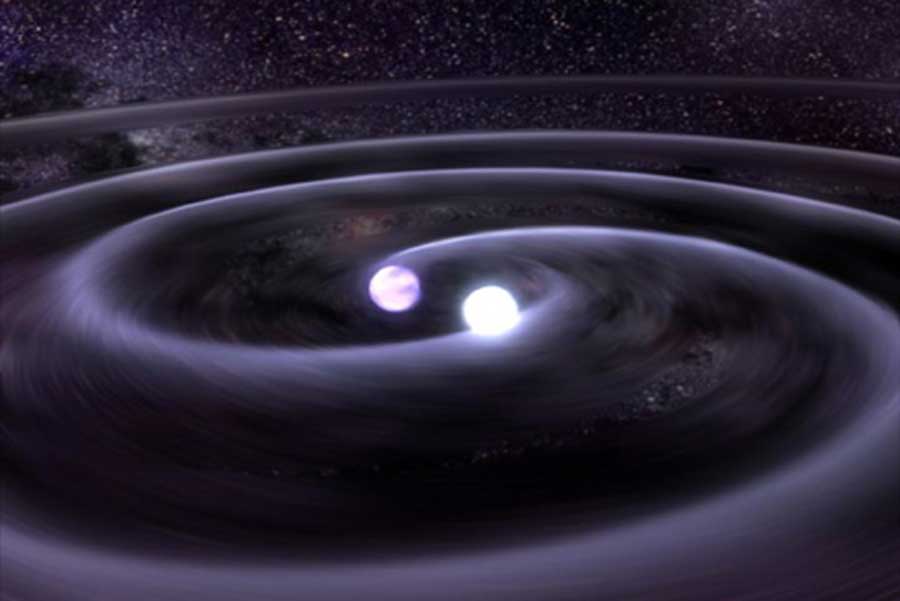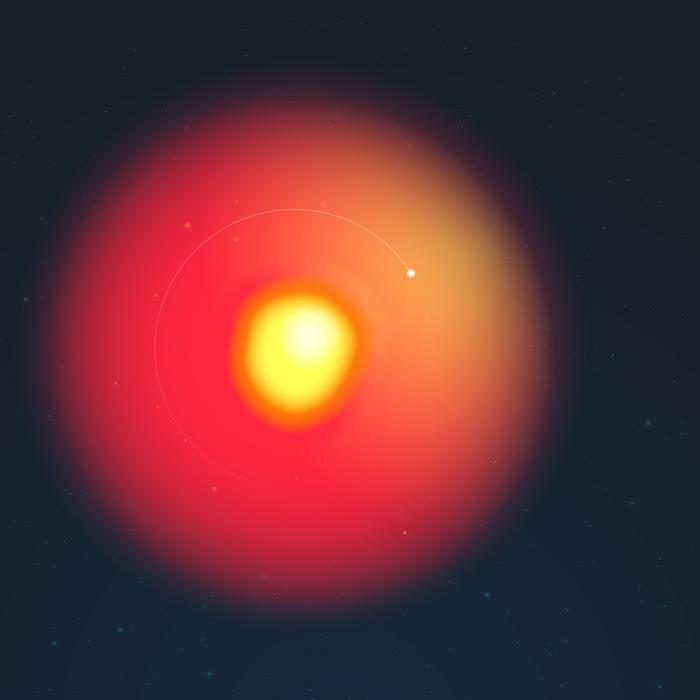Taking advantage of a little-known feature of the Sloan Digital Sky Survey, a team of astronomers led by Carles Badenes from the University of Pittsburgh, Pennsylvania, has helped clarify the origins of an important type of exploding star, using nothing but a few thousand small, faint stars in our own cosmic backyard.
The astronomical fireworks the team studied are called type Ia supernovae — exploding stars so incredibly bright that we can see them even in the most distant galaxies. Badenes and his colleagues compared the number of these supernovae in distant galaxies to the number of binary white dwarfs in our galaxy. The rate is similar, suggesting that merging white dwarfs are indeed a reasonable explanation for these giant explosions.
Type Ia supernovae, while rare, are important because of what they can tell us about the universe. “We know that all type Ia supernovae should be about the same brightness, so if we see one that looks fainter, it must be farther away,” Badenes said. “That means that if we happen to see a type Ia supernova in a distant galaxy, we can figure out how far away that galaxy is.” In fact, using type Ia supernovae to measure galaxy distances is what led astronomers to discover that the expansion of our universe is accelerating — a breakthrough discovery that was recognized with the 2011 Nobel Prize in physics.
Although scientists know what happens during a type Ia supernova explosion, amazingly, they don’t know for sure what kinds of stars create them. “We know that there have to be two stars involved, and that one of them has to be a white dwarf,” said Dan Maoz, an astronomer at Tel Aviv University in Israel. “But there are two possibilities for what the second star is, and we’re not quite sure whether one or both possibilities is right.”
The second star could be either a normal star like the Sun or another white dwarf. If a star system contains two white dwarfs, then the white dwarfs revolve around one another at 0.5 million mph (0.8 million km/h), speeding up and getting closer and closer until one day they merge, most likely producing the fireworks of a type Ia supernova.
“There are reasons to suspect that type Ia supernovae come from the merging of a double white dwarf,” Maoz said. “But the biggest question mark is: Are there enough double white dwarfs out there to produce the number of type Ia supernovae that we see?”
Answering that question requires counting double white dwarfs, figuring out how often they merge, and comparing that rate to the supernova rate in distant galaxies. White dwarfs are so small and faint that there is no hope of seeing them in distant galaxies, so Badenes and Maoz turned to the only place we can see them — the part of our galaxy that’s within a thousand light-years of the Sun. And because their goal was to count double white dwarfs in the neighborhood, they turned to the only survey that could find enough of them to count.
To find a double star system, astronomers don’t actually need to see both stars. Even if one of the stars is too faint, we can detect its presence by its effect on the star we do see. As the stars orbit each other at breakneck speeds, sometimes the visible star is moving toward us, sometimes away from us.
This back-and-forth motion can be detected in the star’s spectrum — a measure of how much light the star gives off at different wavelengths — thanks to the Doppler effect. The Doppler effect is the reason that an ambulance siren changes in pitch from high to low as the ambulance passes. In the same way, light waves from an object that is moving toward us are shortened (blueshifted), while light waves from an object that is moving away from us are stretched (redshifted).
Features in the spectrum called “spectral lines” provide landmarks to measure the shift and, hence, the star’s velocity.
But stars can move for lots of reasons, so just finding one velocity does not give enough evidence that the star has an unseen companion. Astronomers need at least two spectra to prove that. If the star’s calculated velocity has changed between the time of the first and second spectrum, then astronomers know that the system is not one star, but two. Furthermore, they can deduce what kind of star the unseen companion must be. If both turn out to be white dwarfs, they can also use Einstein’s general theory of relativity to calculate how much time remains until the two white dwarfs will merge and explode.
Using this technique requires at least two spectra of the white dwarf, and the Sloan Digital Sky Survey (SDSS) had only one. So that approach wouldn’t work for Badenes and Maoz. Or would it?
In 2008, Badenes was at Princeton University, working in the same building was Robert Lupton, one of the founding fathers of the Sloan Digital Sky Survey. One day over coffee, Lupton told Badenes a little-known fact about SDSS data. When the SDSS telescope measures a spectrum, it is actually measuring three sub-spectra and then adding them together to make a complete spectrum. That way, if there was something wrong with one of the three, the survey could still use the other two. “Robert said that these spectra were there, and that someone should really do science with them,” Badenes said. “I immediately realized that those sub-spectra were the missing piece. Now we could do exactly what we needed to do with SDSS data.”
Then came the hard part. The three sub-spectra were never intended for public use, so they were hard to find, and in a format that was, as Badenes said, unfriendly. Badenes and Maoz worked with Steve Bickerton, an astronomer at Princeton University, New Jersey, to gather and clean the sub-spectra. “We had to process the three sub-spectra separately, but process them in a way that we could directly compare them,” said Bickerton. “It wasn’t easy.”
Persistence paid off, and within a year, the team had a list of more than 4,000 white dwarfs, each of which had two or more high-quality sub-spectra. Some of those 4,000, the team hoped, would show evidence that the star’s velocity had changed between the three sub-spectra, indicating that what looked like one star was actually a double white dwarf.
From among the original 4,000, the team found 15 stars certain to be double white dwarfs. “If there were more than 15, we would have seen more than 15,” Badenes said. Having found 15 double white dwarfs in the local neighborhood, the team could then use computer simulations to calculate the rate at which double white dwarfs merge. They could then compare the number of merging white dwarfs here to the number of type Ia supernovae seen in distant galaxies that resemble the Milky Way.
The result? On average, one double white dwarf merger event occurs in the Milky Way about once a century. That number is remarkably close to the rate of type a Ia supernova we observe in galaxies like our own, suggesting that the merger of a double white dwarf system is a plausible explanation for type Ia supernovae.
In addition to providing a key clue about the nature of these important events, the team’s discovery shows the potential of giant astronomical surveys like the SDSS. “Twenty years ago, we decided to take three sub-spectra for each spectrum. We did that for entirely practical reasons,” said Lupton. “We had no idea that would someday give us an important clue to the mystery of type Ia supernovae. That was a great insight by Carles and Dan, and it was a bit of a lucky break for us.”










